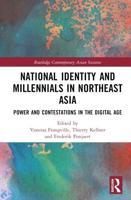Publisher's Synopsis
This book shows how the mnemonic imagination creatively uses the resources of photography and music in the registering and management of change. Looking in particular at major transitions and turning points, it covers key issues of identity for the remembering subject and key scales of remembering in vernacular milieus. The book explores the connections of memory and remembering with transformations in intimate relationships, migration and spatial mobilities, loss and bereavement involving loved ones or those with whom close affinities are felt, resulting in a volume that helps fill the gap in memory studies caused by lack of sustained ethnographic work. Drawing on extensive fieldwork on the processes and practices of remembering in everyday life, it demonstrates how the mnemonic imagination is central to the management of change and transition, and how its cross-temporal interanimations of past, present and future are fostered and facilitated by the visual and sonic resources of photography and recorded music.










